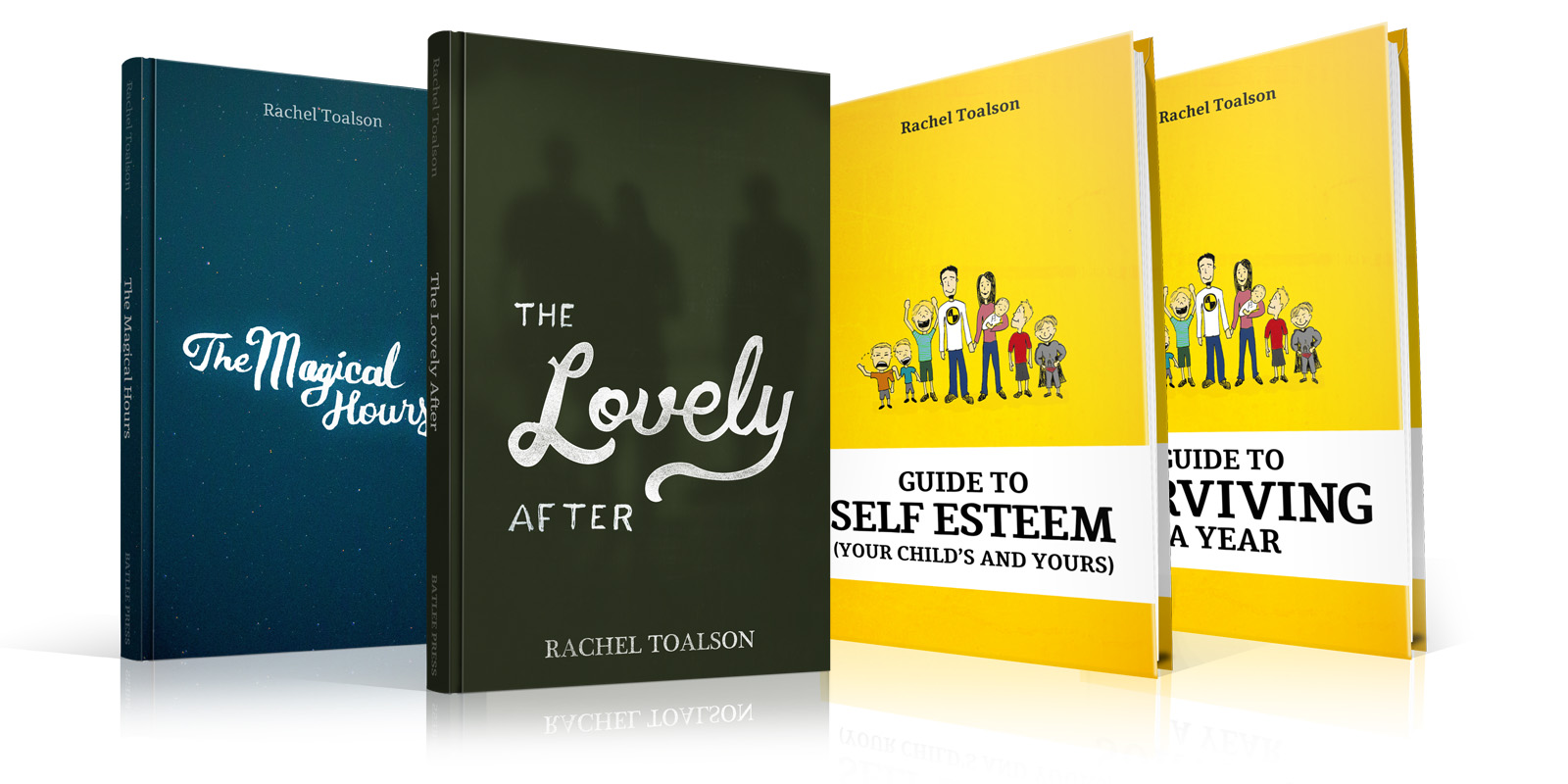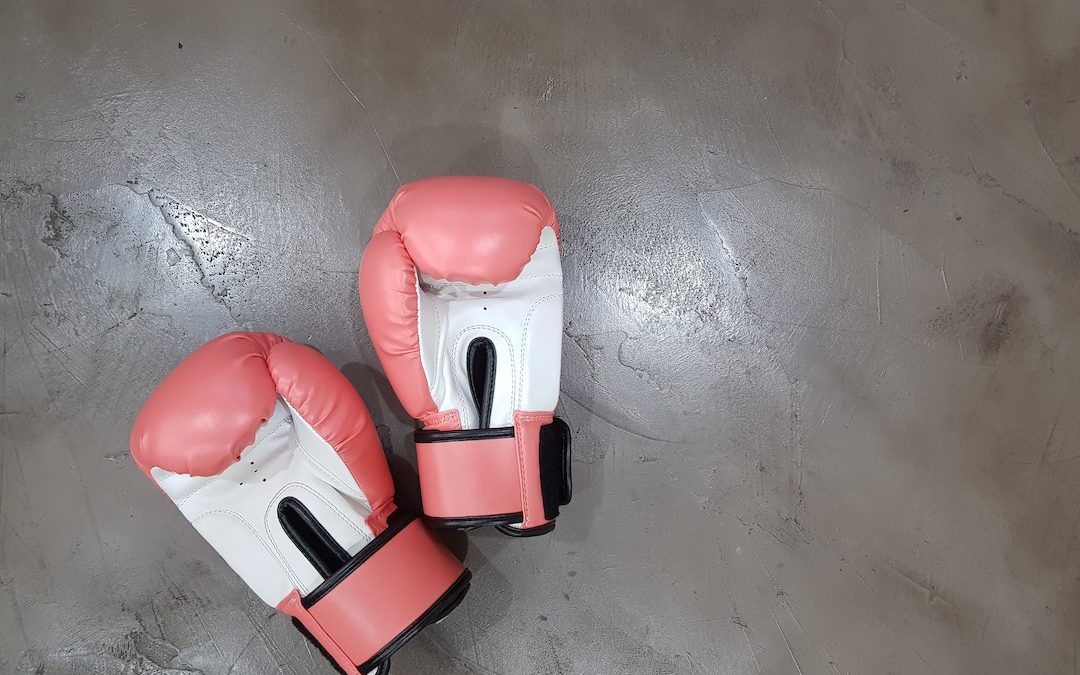
by Rachel Toalson | Books
Here are 5 (or 6) things worth sharing this month:
1. Reading: I recently finished the lovely middle grade novel, Ruby Lost and Found, by Christina Li. It’s about a girl who’s been sentenced by her parents to spend the summer with her grandmother, visiting a local senior center and interacting with her grandmother’s friends. After learning that a beloved bakery in the neighborhood is in trouble, she tries to brainstorm ways to save it. It was such a sweet story of family connection, coming of age, and learning to fight for a community. Highly recommended! Li is also the author of Clues to the Universe, which I have not yet read but, of course, plan to!
2. Reading: Another fantastic middle grade read this month was Gillian McDunn’s When Sea Becomes Sky. It was another summer story (I guess I’m only just getting around to reading them all) about a girl who learns her special place with her brother is going to be destroyed by development—and she tries to save it. Which makes it seem similar to Ruby Lost and Found, but it’s totally different. McDunn is probably best-known for her books Caterpillar Summer (which I also recommend reading) and Honestly Elliott, which I haven’t yet read.
3. Reading: “Mom likes to call them my ‘angels,’ but I worry that takes away their humanity and their nonreligious capacity for love and compassion they showed a stranger.” Javier Zamora’s memoir, Solito, is a sometimes disturbing portrait of his migration from El Salvador to the United States when he was 9. It was a riveting tale of survival and perseverance, made even more emotionally gripping because it was real. I highly recommend it.
4. Reading: I finished another fantastic middle grade this month—Jenn Reese’s A Game of Fox & Squirrels. It’s a magical realism book that confronts abuse in a very unique way. I found it captivating, touching, and…well, magical. I have not read any of Reese’s other books, which include Every Bird a Prince and Puzzleheart (which releases May 14, 2024), but one is currently in my holds stack at the library, and the other will be as soon as it’s released.
5. Watching: If you’re looking for a good drama (if your heart can handle anything other than comedy—and it’s a close call for me), look no farther than Apple TV’s The Morning Show. This show is a very candid look at what a modern early morning TV show workplace looks like. They take on modern-day issues—racial equity, political thought, and (whether you’re ready for it or not) life after Covid (Season 2 gets an up-close look at Covid). The show is currently in Season 3, and it’s been renewed for at least one more season. It’s well worth the watch!
6. Reading: “You fight and you fall and you get up and fight some more. But there will always come a day when you cannot fight another minute more.” Oh, what a disturbing—and yet somehow inspiring—book. Kate Moore’s The Radium Girls: The Dark Story of America’s Shining Women tells the true story of the hundreds of young women who worked in radium-dial factories and lived with the horrendous consequences—and what they did to battle for workers’ rights. It was fascinating, disturbing, and utterly riveting. A few months ago I shared another of Moore’s nonfiction books, The Woman They Could Not Silence. Do yourself a favor, and pick them both up. You’ll be captivated.

by Rachel Toalson | Wing Chair Musings
“Do you think it’s becoming a problem again?” he said.
No. But yes. Maybe. Probably. No.
Thus began my husband’s gentle reminder not to fall into my self-destructive patterns.
We celebrate twenty years of marriage this month. He’s known me more than half my life. There’s not much I can hide from him. It’s like having eyeballs on the inside, sorting through all your secrets.
He recognizes the signs when I start slipping back into disordered eating and getting tripped up by body dysmorphia.
My depression of late has felt a little…wild. Seasons come and seasons go, some longer than others. Some have deeper waters than others. Some spiral out of control.
When things are out of control, I spiral (just like the depression). When I spiral I grasp for control of anything and everything. Most things can’t be controlled, so they slide right through my hands.
Not everything slides, though. What I always convince myself I can control is diet and exercise. I’ll fast for longer, I tell myself. It’s a healthy form of eating, a buzz word in today’s culture (conveniently). I’ll exercise more. I’m doing something good for myself. I’m not doing anything wrong.
My eyes and heart and mind sweep right over the problem, pretending it doesn’t exist. And therein lies the problem.
I know where things can go from here. I’ve lived that story.
So maybe I acknowledge the problem and maybe I don’t, but the reality is, it’s always there, staring me right in the face. Reminding me that this is yet another personal failure.
What a dirty phrase: personal failure.
The people closest to me know I’m hard on myself. My self-talk isn’t always productive. I’m a hopeful person who avoids hoping for the good things I want and desire—because it’s easier and better for my heart not to be disappointed when those things don’t happen. I don’t always practice mercy on myself when I make a mistake.
Maybe this is why I’ve always loved the journals of Sylvia Plath. She was hard on herself, too. And her self-talk was unproductive a lot of the time. And she hoped only tentatively. Mercy was a foreign concept when applied to herself.
I’ve revisited these journals multiple times over the years, ever since my mom gifted me with them for Christmas when I was in high school. And in the last two years I’ve been revisiting them because I’ve been writing a biography in verse about her last years in high school and her years at Smith College in Massachusetts.
We’re so similar I almost feel like I’m writing about my own years of young adulthood. Up down up down moods, one moment feeling like I’m good at what I do, the next feeling like I’m quite possibly the worst writer who ever lived.
And then there are the mistakes.
I’ve made a lot of them in my life. I’ve tried to forget them as well as I can (but you never really do, do you?), because for a long time, it felt like my mistakes said something about me. They were personal failures. Evidence that I was broken. Incapable. Wrong.
Sometimes they still feel like that.
Viewing mistakes like this kept me—sometimes still keeps me—from examining my weaknesses. It keeps me ignoring my problems. Pretending they don’t exist but are simply things I can’t fix.
That doesn’t solve anything, though. As Margaret Haffernan, an entrepreneur in the UK, says, “You cannot fix a problem you refuse to acknowledge.”
We can’t fix problems we sweep under the bed, hide to our best ability, ignore like if we ignore them long enough they’ll go away. Problems are sticky. They hang around. And they don’t shrink, they grow when they don’t get the attention they think they deserve.
After my husband asked me that gentle, pointed question; after I saw that I was, indeed, headed toward that dangerous road again; after I metaphorically collapsed around another personal failure, another mistake, a voice came from somewhere down deep. Mistakes aren’t who you are, it said. The voice sounded just like me.
That’s because I’m constantly telling my kids this. Mistakes are just mistakes, I tell them. Opportunities to grow. They can be fixed. They aren’t who we are.
I hadn’t been listening to what I knew.
How can we fix something we refuse to see or acknowledge? We can’t. That goes for mistakes, and problems.
I’m still a work in progress. I’m still learning not to expect perfection in myself. Some days are better than others.
Problems aren’t fixed once and for all. Like anything else, they require a journey. Some problems may take our whole lifetimes to solve. We may slip and slide backward and forward along the path of recovery and healing.
But here’s what we can know, too: We’re stronger than we know. We are capable of great things. We can face any riptide that comes.
And maybe that’s the part that matters most.
Have a glorious month of seeing with wide-open eyes and realizing your inner strength.
Here are some suggestions for rooting out problems from their hiding places:
1. Identify.
Finding problem areas we’ve ignored or hidden or shoved under our bed can seem like a monumental task. But it’s the first step in the process of fixing those problems. So we need to pull everything out, dust off the boxes, shake out the rugs, and brave the spiders that may have nested while we were so busy trying to ignore them.
I might have taken that metaphor too far. Forgive me.
If you need a place to start, try your frequent frustrations. Our frustrations can tell us a lot about our problem areas. One of mine (simpler than the one mentioned above)? Clothes left on the floor! This is both my children’s problem and mine. They should pick up their clothes, I should stop pining after a perfectly tidy house and remember that living with people means accommodating their personalities and tendencies (while still communicating my own needs for a mostly-tidy house). Compromise is the language of roommates—and families.
2. Acknowledge.
I’ve found in my life that some of the most powerful words we can say are, “I acknowledge this is a problem.” It brings with it a great relief—sometimes to the person pointing out one of our problem areas, sometimes just to ourselves when we’ve ignored a problem for so long it also, ironically, seems to be the only thing we think about in the backs of our minds. (Who knows how that’s possible, but it is.)
3. Make a plan.
This is probably my favorite part of the process. I don’t necessarily relish identifying or acknowledging problem areas, but I am all about the plan. I will plan in minute detail. Meal plans that will make sure I’m eating. Fitness plans that will protect me from taking my workouts to an extreme. Therapy plans that get me the psychological care I need.
Make a plan to address and fix your problem(s), one step at a time. And remember it won’t be solved all at once. You’re a work in progress. We all are. So let’s be gentle on ourselves and practice a little mercy.
I’ll be attempting to do the same.

by Rachel Toalson | This Writer Life
Some creative people think that creativity only happens when the “muse” strikes.
That always sounded strange to me. Who was the muse? Am I not my own muse? In charge of my own creativity? If I had to depend on some nameless, invisible muse, who may or may not show up when I had some extra time to write, how would I ever get anything done?
It all sounded very unpredictable. And I don’t like unpredictable (in case you haven’t already figured that out).
So I probably don’t even need to tell you that I don’t subscribe to this belief.
What I do, instead, is train like a writing athlete.
I can hear the groans already. Training? Athlete? We became writers so we didn’t have to expend that much energy.
While it is some work to train like a writing athlete, I promise it’s not as much physical as it is mental.
And if you’re the kind of creative person who prefers waiting for inspiration to strike, then the following tips can help lay out the red carpet for the muse.
1. Be consistent.
I know it’s not always easy being consistent. I have six kids. This summer was a flurry of pediatrician well checks and eye doctor appointments and dentist appointments—and that’s just the scheduled extras. There are so many variables with six kids. Someone forgot to tell me about drama practice, someone missed the morning bus, someone got sick, someone decided he didn’t like carrots anymore.
But still, if all else fails, I try to squeeze in at least fifteen minutes to half an hour of writing time every day. I’d prefer more, sure, but the consistency is what’s important.
Consistency leads to necessary gains. Just like my consistent training makes me a better, stronger runner, so consistent training (or practice) makes us better, stronger writers.
Build your process. Experiment with what works for you. We’re all different. Don’t worry about how fast or slow you write. Focus on the best training schedule for you.
2. Don’t be afraid to add variety.
When we’re not training in our one specific fitness area (such as running), we think it hinders progress. I believed this for a long time—until I injured myself and had to take some time off, which is actually what hindered my progress. I spent that time off strength training, adding pilates and yoga to my regular workout rotation, and rowing. I came back a much stronger runner than I was before.
Writing, too, needs variety. Writing different forms in different genres, for different age groups—even if it’s just for fun and never goes beyond a very short story on our hard drive—challenges and stretches us as writers. Adding variety into our regular writing routine can strengthen our main discipline. If we write novels and change it up by writing short stories, we’ll likely write better novels. If we write essays and change it up to write some poetry, we’ll come back to the discipline we love much stronger.
In the same way, adding a variety of creative disciplines into our regular routine can make us better at our main creative discipline. Do other creative things that don’t seem to have anything to do with writing. Compose some songs, draw some pictures, pick up an instrument, dance like no one’s watching. Creativity enhances creativity.
3. Rest and recovery are just as important as the discipline of work.
You know where fitness gains really happen? In the rest after putting in the work. Muscles repair themselves and get stronger. Lungs expand and improve their capacity.
I like to think the same is true in writing. The brain keeps working even when we take time off. The subconscious mind works while we’re unaware of it.
So take a day or two or a whole week off. Spend the time doing other creative things or nothing at all. Let your brain rest. It will likely keep working for you—but will appreciate the rest all the same.
I hope you have a joyous month of consistency, variety, and rest.

by Rachel Toalson | Books
Here are six things worth sharing this month:
1. Reading: “I think standing up for yourself always makes a difference.” I just finished reading Ali Standish’s latest middle grade book, The Mending Summer. It was lovely and hard and sweet and infused with magic and love. It’s about a girl dealing with alcohol addiction in her family, and I found it an authentic picture of what it’s like living with addiction under your roof. Standish is the author of multiple books; two of my other favorites include The Ethan I Was Before and August Isle. I highly recommend them all!
2. Reading: “Let everything happen to you: beauty and terror. Just keep going. No feeling is final.” You Could Make This Place Beautiful, by poet Maggie Smith, is a memoir of divorce. And oh my goodness is it beautiful. I didn’t expect to love this as much as I did, since I’ve never been through a divorce. But as a child of divorce, I felt like it was something my mom could have written. It was just…lovely. You must do yourself a favor and read it. Smith is the author of numerous poetry books, including Goldenrod and Good Bones, which are both on my reading list now.
3. Watching: If you have not yet seen the Barbie movie, you must! My husband and I saw it in the theater together, and then we took our three older boys to a second showing. I loved it even more the second time, and my sons loved it, too. When we walked out of the theater that day, a young girl was crying and told her mother, “I loved that movie so much!” It was such a sweet moment, and my 14-year-old couldn’t stop talking about how much it meant for that girl and so many others. Anyway. End of gushing. Just go see it. (You can also watch my YouTube review of it—but beware, it has slight spoilers!)
4. Reading: One of my favorite summer middle grade reads was Lasagna Means I Love You, by Kate O’Shaughnessy. It’s about Mo, who’s just lost her grandmother and who is now in the foster system. Mo writes to her grandmother in letter format…and it will not take you long at all to absolutely love this girl, who is desperately longing for a family to call her own. O’Shaughnessy is also the author of The Lonely Heart of Maybelle Lane, which I have not yet read but will soon!
5. Reading: I just subscribed to Ms. Magazine. I’m not sure why I never thought to subscribe before! The magazine is celebrating 50 years, and it’s a treasure trove of statistics on equality/inequality, political needs, and women’s issues. I look forward to seeing it in my mailbox every quarter! The Ms. web site is also a wealth of information…I’ve found myself getting caught in black holes of research there!
6. Reading: “Here’s a theory: Maybe I had not really been broken this whole time. Maybe I had been a human—flawed and still growing but full of light nonetheless.” Another phenomenal memoir I read this month is Stephanie Foo’s What My Bones Know. It’s a memoir of trauma. It was eye opening and challenging and ultimately hopeful. I read the audiobook, but I had to get the hard copy so I could read it again and make notes and study it, because it’s full of helpful research. I felt such a connection to this memoir, because for the first time it put words to some of the trauma I’ve experienced in my life—and the long, difficult road to healing.
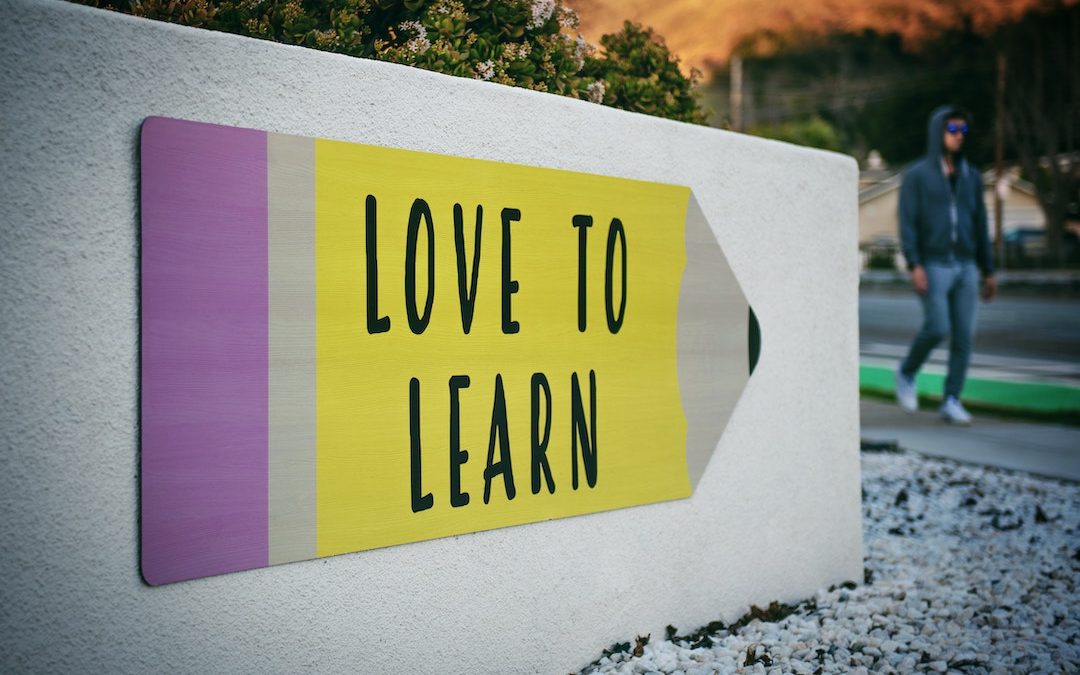
by Rachel Toalson | Wing Chair Musings
I have always loved learning.
When I was four, my family lived right across the street from the red-roofed elementary school where I watched my brother get swallowed by the white doors every morning. I couldn’t understand why he got to go to kindergarten and I didn’t. Who cared about being five? They should let anybody in who wanted to learn!
I made my brother teach me what he’d learned as soon as he came back home. So I learned to read right alongside him—and oh, what a world I discovered when I picked up books!
My love of learning continued all through middle school and high school. I set my sights on college—because I didn’t want to stop learning. And even though I did not come from a family of college graduates or even a family that could afford college, I worked hard for that dream.
An even bigger world opened up for me in college. I’d grown up in a small town. College exposed me to different people and different viewpoints and the amazing (and sometimes scary) reality that I hardly knew anything—and nothing for certain.
It was both a humbling and an exciting revelation. Humbling because it’s always a little jarring when you’re faced with how little you actually know. And exciting because it meant I could forge within myself a space for constant growth and learning. I could entertain my wonder. I could explore my uncertainties.
Maybe we don’t always like asking questions out loud, where people can hear, where our ignorance feels like it’s on display. People aren’t always kind and patient with our questions. Sometimes it feels like we live in a world where everybody knows the for-sure answer except for us.
But a question I’ve always asked myself is, What if there are no for-sure answers? And another: What if those of us who pretend to be so certain (and make no mistake—I pretend sometimes, too) are really some of the most uncertain people among us?
Can we know anything for certain?
I’m not talking about our convictions, where we take a hard stance and are unwilling to compromise. My 14-year-old pointed out one of mine the other day. He said, “You know, you’re really open-minded about a lot of things, but when it comes to food and healthy eating, you’re, like, unbendable.”
I made some joke and then followed it up with something like, “I’m unbendable because it’s one of the things that are important to me. Like climate change. And women’s rights. And a lot of other social issues.”
It’s good to have those convictions and hard stances. But even within those, we have to be willing to learn more. I have rigid rules about the food in our house being healthy and mostly plants. It doesn’t mean I’m not open to hearing new information about nutrition. In fact, I actively seek out new information and have since I studied nutrition in college. Science changes. I change with it when I need to.
Being rigid about our convictions doesn’t have to mean we’re closed-minded.
When we remain open-minded, we allow ourselves to consider and accept new information. We seek to clarify. We ask important questions without fear. We wonder. And along the way, we learn that the more we learn the less we actually know.
Which is why it’s important to embrace an attitude of learning.
I love what William Least Heat-Moon, an American writer and historian, said: “Maybe the only gift is a chance to inquire, to know nothing for certain. An inheritance of wonder and nothing more.”
And Octavia Butler, another American writer, says, “I don’t know very much. None of us knows very much. But we can all learn more.”
Failure is a good learning opportunity. So is struggle. And joy. And disappointment. And hurt. And…
You get it. Life is a learning opportunity. But we must remain open to learn from it. We can spend our whole lives just existing. Going through the motions. Making the same mistakes again and again and never even noticing room for improvement.
I want to learn as much as I can about the world and its people and history and the present and the imagined future. I want to learn how I fit into the fabric of that past and present and future. I want to learn what I can do to make it a more beautiful place for everyone.
Wonder is good at doing that.
Have a beautiful month full of wonder, new ideas, and learning opportunities.
Here are my favorite ways to learn from life:
1. Let yourself feel what you feel. Then learn.
When my sons are flooded with emotions after an altercation or a disappointment or an experience that upset them in some way, there is no room for immediate learning. When the body and brain are flooded with emotions, that’s all we can consider. We don’t have capacity for learning.
So I have to wait until the strong feelings pass to talk to them and teach.
It’s the same in our own lives. When an experience leaves us flooded with an emotion—fear or hurt or embarrassment at misspeaking, we aren’t ready for learning. But feelings pass. So when the emotions have calmed, we can consider what we might learn from our experience. (And guess what’s great at helping us learn? Journaling!)
2. Read widely.
As if I really need to tell you this. But I often remind my kids: the more you read, the more you know. Maybe you won’t know everything and maybe you won’t know anything for certain (still), but reading exposes you to a wealth of information. Books, magazines, newspapers, comic strips, anything you can get your hands on—read it! When you read about the experiences from the viewpoints of other people, especially people who are different from you, it will open your mind to new information. What an exciting possibility!
3. Listen to other people.
Reading is a form of “listening” to other people. But listen, too, to the people around you. Seek out other viewpoints. Try to understand those who differ from you (this is work I’m trying to do as well…and it has been some of the hardest work I’ve done in my life).
When I was a journalist, I had to interview all kinds of people. People whose beliefs made me bristle. (Once I had to report on a KKK rally in Austin. It was very difficult to stomach.) People whose stories opened my eyes to new ways of thinking and being. People who challenged me and angered me and delighted me and frustrated me. And at the end of the day I had to write a balanced story as though I was an objective observer of life, not an opinionated participant in it. It was good practice for the listening I’d need to do to maintain an attitude of learning.
Listen without judgment. Absorb people’s stories and knowledge. Weigh them against your own. Think for yourself, but don’t think in a vacuum.
Before every encounter with a person (especially the difficult ones) ask yourself, what might I learn from them?
It’s a question that can change the world, I think.
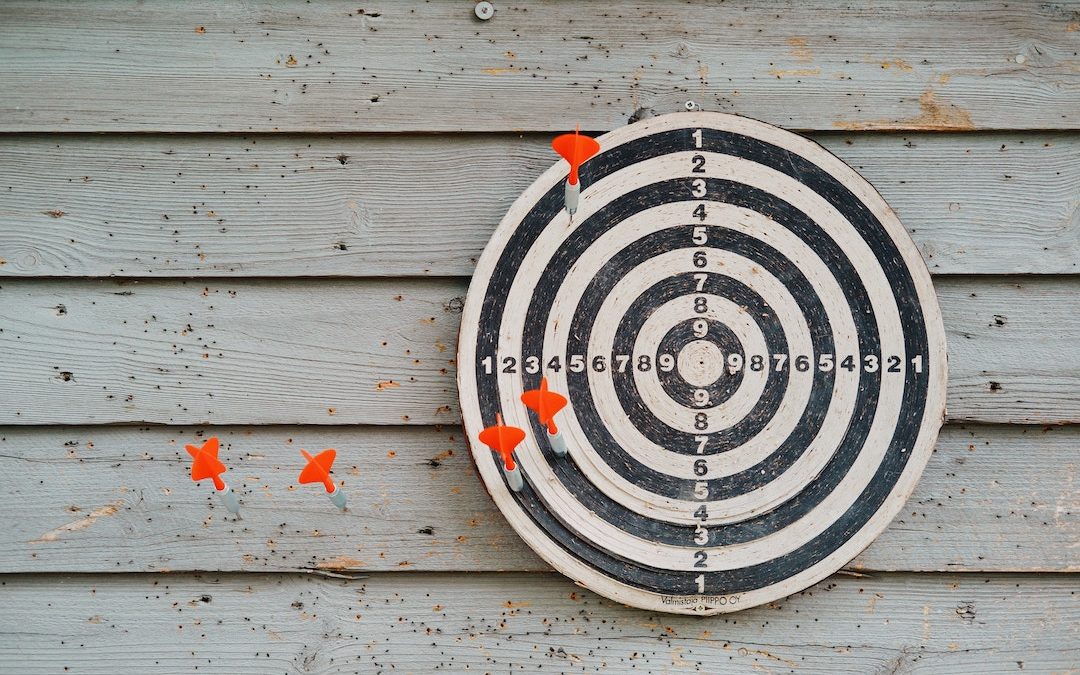
by Rachel Toalson | This Writer Life
The first year I ran track in middle school, I remember my coach telling us, “Running is about 90 percent mental.” I remember thinking, That’s ridiculous. I’m not running with my mind, I’m running with my body. And my body is too tired for this.
And as soon as I thought that, my body was too tired for it.
Which proved her point (but it would take me many more years to concede that).
The same is true for writing. I’m not sure about the 90 percent when it pertains to running, but it’s definitely true for writing, which is all done with the brain and needs positive, clear, excited brains to actually get started on any kind of project.
Just like when I head out the door for a run thinking, This is hard and awful and the run turns out to be hard and awful, if I start my writing session thinking, This is not gonna be good, it probably won’t be good. Our thoughts and attitudes make a huge difference in this career.
The mental game of writing is not an easy one to master. Thoughts break in during the middle of a writing session: Oh, this is so bad. No one’s gonna want to read it. I don’t want to read it, even. I should just trash the whole thing. This was a terrible idea anyway.
It didn’t take me nearly enough time to write that paragraph, because I’m intimately familiar with these intrusive thoughts. They plague me.
Peace Pilgrim, an American teacher, once said, “If you realized how powerful your thoughts are, you’d never think a negative thought.” But it’s not quite as simple as never thinking a negative thought again, is it? Because our minds sometimes have minds of their own.
So how can we better play the mental game of writing?
Here are some suggestions.
1. Do the work.
The more you practice, the better you get and the more you can talk back to those voices.
Most skills and talents don’t improve beyond any small measure we may have been born with if we’re not willing to practice. Practice develops expertise and competence. And as we develop expertise and competence, we also practice taking on the mental game of writing, facing all those voices that seek to stop us, pushing through their resistance, and building our perseverance. All of that practice is worthwhile.
But we also have to practice strategically. If we practice mistakes, we’ll get better at mistakes. When I played clarinet in high school and college, I had a rigorous practice routine. I’d spend between 90 minutes and two hours practicing to a metronome. I’d first warm up on every scale, including the chromatic, from memory. Then I’d start with the problem areas, slowing things down until I played the problem area perfectly, then speeding it up and moving on only when I felt comfortable with my competence playing the passage.
I take this same meticulous approach to my writing. I identify my weaknesses, study, play around with no-pressure compositions that challenge my weaknesses and work on strengthening them. It’s a grueling process, but it’s a good boost to the confidence when a part of writing that used to feel so hard doesn’t feel all that hard anymore.
2. Practice turning a negative phrase into a positive one.
Let’s say you sit down to write and your brain immediately says, You can’t do this. Talk back. Say, I can do this. And I will. If your brain says, What’s the point? No one will read it. No one cares. Say, Someone will read it. Someone will care. And the point is also that I love this and someone needs my story. If your brain tells you, This is crap, tell it, It may be crap now, but revision is where crap turns into brilliant.
If it’s too hard to do this mentally, take out a sheet of paper. If your brain throws you a negative thought while you’re writing on your project, use your sheet of paper to record the negative thought (even if it breaks your flow for a second or two). Underneath it, write the opposite of what the voice is saying (preferably in larger, bolder letters. Put that voice in its place.). Do this for every negative thought your brain supplies. And then put your paper on a bulletin board or wall where you can see it every time you write.
Negative thoughts get quieter when you take away their power.
3. Remember every writer faces resistance.
You’re not the first and you won’t be the last. No award, no bestseller status, no three-book deal will eliminate the mental game you’ll have to conquer (nearly) every time you sit down to write. We never feel 100 percent competent. We all deal with imposter syndrome, however many books we’ve written or how long we’ve been doing this. That’s either a source of comfort or a source of despair. I hope it’s the former.
Our thoughts can be powerful. But we don’t have to let the negative ones have the final say.
Have a wondrous month of talking back.
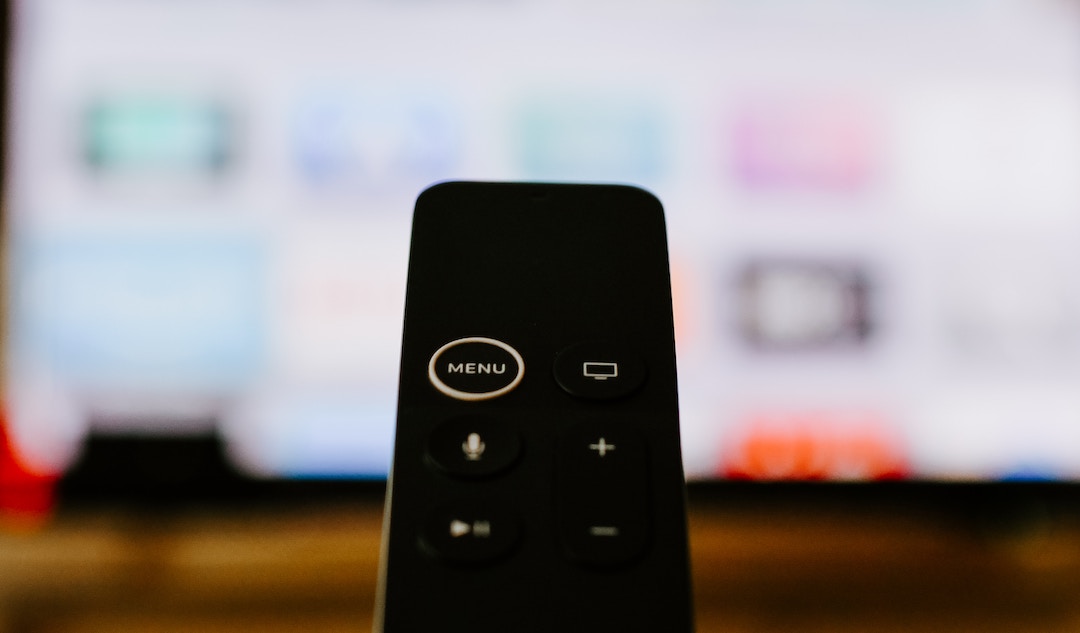
by Rachel Toalson | Books
Here are 5 things worth sharing this month:
1. Reading: “Its heart was heavier with the weight of the young worker’s words. But should a heart not be heavy, in a world full of injustice?” I just finished Sacha Lamb’s brilliant YA book, When the Angels Left the Old Country, and my gosh was it good. It won the Stonewall Book Award, the Sydney Taylor Award and was a Michael L. Printz honor book, and I can definitely see why. It’s about an angel and a demon who leave the “Old Country” to come to America and help address social injustice for Jewish people. This is Lamb’s first book; I can’t wait to see what comes next.
2. Reading: “I wonder what it’s like to be with someone who can love you through your rage.” I guess I’ve been on a YA kick, because I also finished All My Rage, by Sabaa Tahir and loved it as well. This book won the National Book Award and the Printz Award for Excellence in Young Adult Literature. It’s a love story about family and forgiveness. Don’t miss it!
3. Watching: Looking for a funny, quirky, entertaining, bingeable dramedy? Check out The Great, on Hulu. It’s loosely based on Catherine the Great, German queen of Russia. It stars Elle Fanning, Nicholas Hoult, and Phoebe Fox, along with many others. Warning: It can get a bit raunchy at times. But it’ll make you laugh out loud.
4. Reading: I also just finished The Body Keeps the Score: Brain, Mind, and Body in the Healing of Trauma, by Bessel A. Van der Kolk. It’s a long and in-depth book about trauma and effective methods of healing. Highly informative and enlightening, it also gave me a little hope for my own persistent trauma. I will acknowledge that in 2018 Van der Kolk was fired from the Trauma Center, where he did his research work, over allegations that he bullied employees. Nothing has been proven, but it’s worth acknowledging. I don’t think it detracts from this book and the research findings presented in it.
5. Watching: My kids and I just finished Season 1 of Netflix’s Down to Earth with Zac Effron. It’s a docuseries that follows Effron and a partner to different places in the world to learn how climate change is affecting other cultures and what innovative techniques people have developed to address climate change as well as social injustice. I absolutely loved this series. My kids and I have already begun on a more eco-friendly plan for our family. We’ve been on this journey for years now, but this show lit another fire under us. This year we’re tackling plastic—no more plastic! Maybe I’ll write about our continued and more fervent journey. 🙂
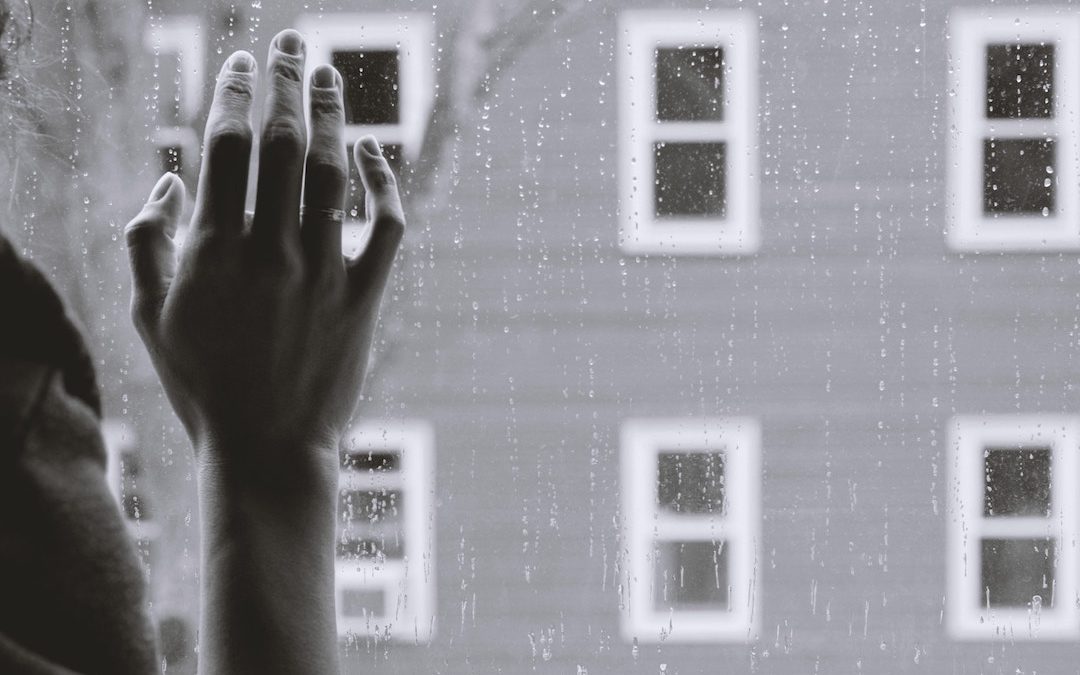
by Rachel Toalson | Wing Chair Musings
We’ve reached that time of the summer where my kids are at each other’s throats, everyone is growing tired of the family togetherness, and the oppressive heat of Texas is wearing our patience thin.
And my emotional wellbeing begins to slip.
I call this time the “summertime sadness.”
It’s more than just the title of a Lana del Rey song, though. For those of us who wrestle with Major Depressive Disorder, seasons of sadness are a real thing. Summertime is one of those seasons for me.
Knowing this about myself, I took what precautions I could. Even though my latest book released at the beginning of the summer, I made sure I scheduled some renewal time between my in-person events, for rest and reflection and time spent with the people I love. I scheduled more therapy sessions. I doubled up on my journaling practice.
And yet, depression still found me.
It’s a persistent illness that frequently reminds me I can take all the necessary precautions, structure everything just so, prepare myself for its eventual visitation and even still it will surprise me.
This time it snuck up on me while I laughed and played some improv games with my kids. One minute we were playing “Alphabet,” the next a pain gripped my chest and (metaphorically) shook me.
This won’t last forever, it said. Time is running out. Have you done enough?
That little standoff with time was all it took to send me spiraling into a whirlpool of questions.
Why do you work so hard? What’s it all for? What have you really done, besides waste time you could have spent watching your kids grow up? Who cares about your stories, really? What about your kids?
I’m well acquainted with these questions. They plague me at the most inconvenient of times. It’s one of the results of living as an ambitious woman in a still-patriarchal society, growing up and coming of age in a religion that calls me a helper, not a leader.
So in some ways, I expect the questions, usually around the time I feel depression creeping in. It’s unclear why it happens…maybe I’m too exhausted to put my guard up and combat the messages I’ve internalized. It’s exhausting being a woman.
What I didn’t expect was for the questions to turn into definitive statements that bludgeoned me every single time I opened up my notebook to write.
You’re wasting your time. No one cares what you have to say. You’re sacrificing your kids for stories no one reads, books that don’t matter. You’re selfish. Get a life. Do yourself a favor and quit. You only have one life, and it’s flying by.
On and on and on it went.
I could scarcely write a thing.
Maybe I need a break, I thought. I took a week off. I read and watched movies with my kids and baked two treats with two kids instead of one.
The summertime sadness was worse than ever. The voices came back louder and crueler. They called me names. They repeated all those definitive statements I’d already heard. They added more.
Mordechai Anielewicz, a Polish activist, once said, “The most difficult struggle of all is the one within ourselves.” I’ve found that to be true in my own life.
Our struggles show themselves in depression and anxiety and OCD and a negative and critical inner voice and in so many other ways. They’re heavy. They can weigh us down. It’s hard to crawl, let alone walk, when we’re carrying so much on our shoulders—not just our own mental health struggles but also the burdens of our children, our partners, our friends, our family, the world. How does anyone escape the summertime sadness?
For some of us it’s different. It’s not a sadness, per se. The struggle within ourselves looks like lack of focus or lost hope or saying yes to too many things or forgetting to treat our enemies with love and respect or losing belief in ourselves or failing at work/life balance. Maybe we all struggle with all those things. At any time in our lives we’re faced with any number of internal struggles. And usually, just when we sort of figure one out another comes knocking.
We face so much internal resistance. It’s a wonder we manage to do anything worthwhile.
Sometimes we just have to embrace the struggle. Know it will pass. Have faith that we will come out on the other side not only still standing but standing a teeny little bit stronger.
I’ve begun listening to the arguments in my house, and instead of immediately sighing and thinking, I really can’t take this anymore, I think, They’re learning to express themselves, and I get to teach them how to resolve conflict respectfully. The family togetherness may feel stifling at times, but it’s a chance to connect in small ways, and we’re all learning what we need and what we can handle. I’ve begun accepting the triple-digit heat, instead of wishing it away.
And as for the critical voice, well, she’s not quite as loud when I argue with her.
No one needs your stories, she says.
I do, I say.
And I try to remember that someone else put that negative, critical voice inside me—and it’s the constant work of therapy that will extract it.
The most difficult struggle we have is within ourselves: the internal battle to be who we are. To do what we were made to do. Or maybe simply to survive the summertime sadness.
We’re living a story; what kind of story do we want it to be? I know my answer to the question.
Have a victorious month of slaying your internal struggles.
Things that can help when we’re internally struggling:
1. Assess
Journaling can be a great way to assess our internal voices and track down their origins and search for some perspective. But if you’re not a journaler, try some other form of assessment—taking out a blank sheet of paper and listing all the negative voices you hear and tracing them down a timeline or connecting them to the people (or situations) you remember hurting you in real life.
Sometimes we pick up negative voices not because someone actually said them to us but because a situation or person made us feel a certain way—accidentally or purposefully. It’s worthwhile to find those places and write a different story.
2. Talk to someone
Having someone to talk to who can challenge you on those negative voices can be supremely helpful. It could be a partner, a trusted friend, a group of friends, a therapist. Everybody struggles with negative voices and imposter syndrome—and chances are, if you share about your struggles, someone else will have been there and can listen with an empathetic ear or walk you through it, if that’s what you need. Don’t underestimate the value of relationships to get you back on track.
3. Take some time off
We overlook this piece often—because we don’t want negative voices to win. And it feels like taking time off is letting them win.
But it’s not. I’ve found in my own life that my negative voices get loudest when I’m tired and I’ve been working maybe a little too hard and I haven’t had enough connection or restoration time. When I’m most in need of a break. It makes sense, doesn’t it? We can’t fight the “internal bad guys” when we’re tired or distracted or trying to hold a plate that’s way too full.
Set some things down. Put your feet up. Read a book. Watch a show or documentary. Call your sister. Take a walk and get out in nature. Listen to music. Dance. You’re not running away from the voices, you’re dismissing them—and having fun while you’re at it.
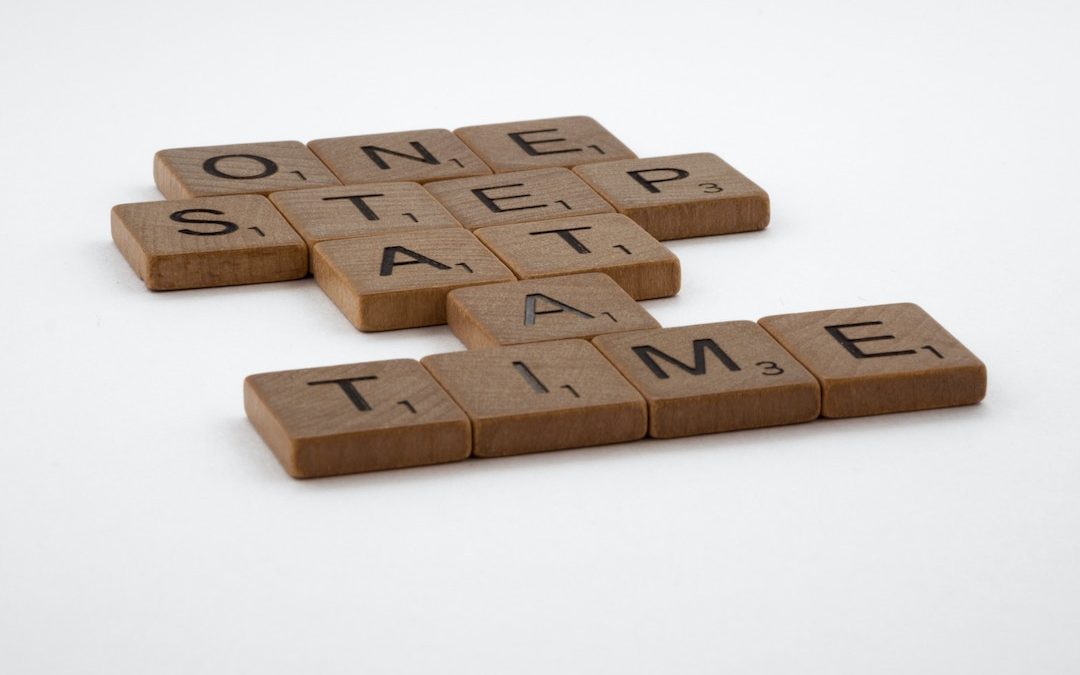
by Rachel Toalson | This Writer Life
There’s a myth out there that says the longer you write the better you get at it.
Okay, that’s not a myth. Practice makes progress, after all. But where the myth shows its face is in the belief that as you get better at writing, it also gets easier.
Uh…I’m sorry if I have to burst some hope-filled bubbles here (and I’ll try to give you new hope-filled bubbles by the end of this), but writing does not get easier with practice.
I mean, in some instances it does. I now have sort-of a process for getting a first draft written and revising it endlessly and perfecting it even longer—it’s not all just loose ends flapping in the wind. So I suppose that’s gotten easier. But what hasn’t gotten any easier is getting started. Or dragging myself through the middle—although I have gotten better at them…it’s just that by the time you get to the middle of a project your excitement for the newness of it has worn off and you’re not yet excited for the end because you still have so…far…to go.
What I’m trying to say is the mechanics of writing get a little easier the longer we’ve been writing. But the thing that gets in all our ways—the headspace of writing—doesn’t necessarily get much easier.
Unless…
You know I wouldn’t leave you with something as hopeless as it never gets any easier, didn’t you?
The truth is, our heads get used to the constant persistence after a while. We feel that initial little oh, wow, this is a big commitment, I don’t have the time, and we know we’ve done it before. We’ve found the time. We hear those voices that say, Well, this idea is crap and no one will ever want to read it, but we also know we’ve taken a crap idea to a brilliant idea before, so it stands to reason we can do it again.
We’re faced with a blank page and that little surge of panic that accompanies the thought, I don’t know what to write, and we remember what Frank Choi, a Korean American poet, said: “Just start a sentence and hope brilliance will strike.”
And we get started, like we did last time.
We just start a brainstorm and hope brilliance will strike. We just start a sentence and hope brilliance will strike. We just start a revision and hope brilliance will strike.
And brilliance usually does, eventually, if we’ve put in the work and the time.
Here are some ways we can help brilliance along:
1. Write the first draft by hand.
I know it’s a radical ask. We live in the golden age of technology! Why would we write an entire book by hand?! It takes so much longer!
Sometimes that’s the point. When we fly through scenes, we sometimes don’t get everything out of them that we may have gotten if we’d slowed down a little. Maybe there’s a significant look one character gave another that meant something ominous. Maybe there’s a vital line of dialogue we missed in our hurry to get all the words typed into the document. Maybe we’re missing an entire point in our essay because we haven’t slowed down enough to let it marinate.
And besides that, scientific research indicates that we use a different part of our creative brain when we write by hand. So if you write the first draft by hand and subsequent drafts by computer, you’re using your whole brain. How cool is that?
So grab a notebook and start writing. And if you don’t want to write an entire book by hand, try just the first chapter.
2. Put your composition away for a while.
When you’ve finished a draft of whatever you’re writing, I always recommend putting the story aside for a while before picking it back up. Time and distance allow our brains to approach stories with fresh ideas, and we can more clearly see problem areas and places that need fixing.
How long should you put it away? Well, that depends on your preference. My first drafts often get put away for three or four months before I dust them back off. And hopefully in that time I’ve not only grown as a writer but also as a person, and I can make vast improvements to the story.
Later drafts (drafts 2-6 or so) get put away for between two weeks and a month. Fresh eyes are valuable.
3. Remember you’ve been here before.
The longer you practice writing and the more stories and compositions you complete from start to finish, the more likely you can remind yourself, at any step of the process, that you’ve been here before and you’ve written your way out. The exciting beginning, the not-so-thrilling middle (I know I’ve been dumping on the middles, but truthfully the more middles I write the fonder I get of them), the I’m-not-sure-how-to-end-this…you’ve been in all these places before. Which means you can confidently and expertly (maybe) see yourself through them again.
Writing comes with all kinds of resistance. But the more practice we get putting words on a page and pushing through the resistance that’s bound to come, the better at it we get. And…dare I say it? The easier it all gets.
Not easy. Just easier. Marginally.
But we don’t do it because it’s easy, do we? We do it because we love it.
Have a fantastic month of starting and finishing sentences—hopefully brilliantly.
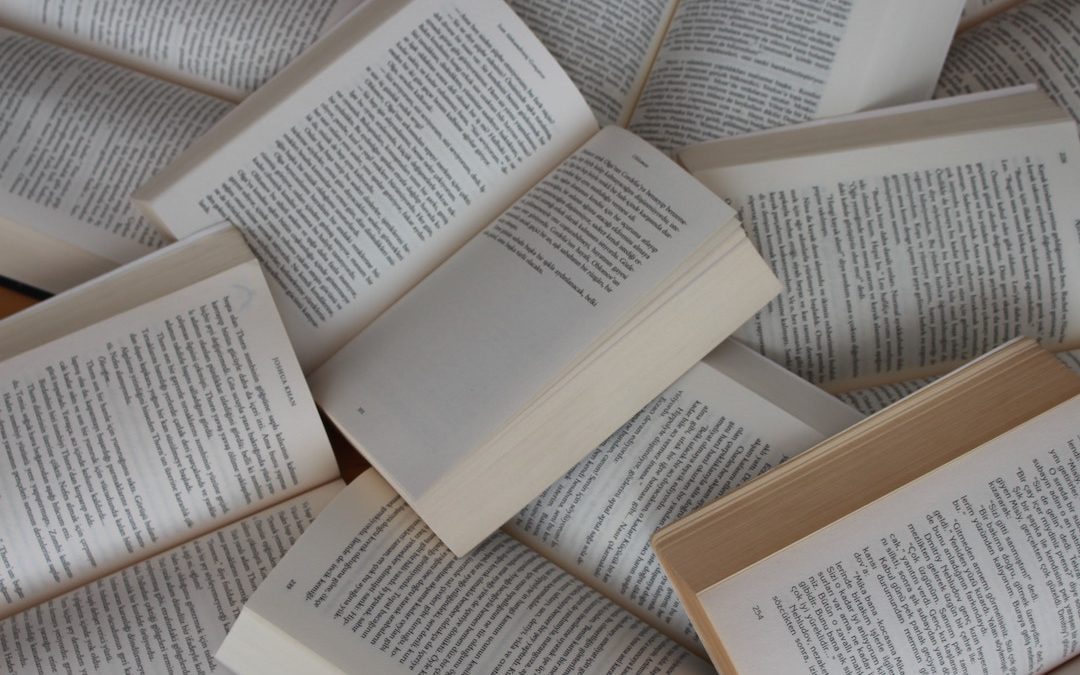
by Rachel Toalson | Books
Here are 6 things worth sharing this month:
1. Reading/readers: Have you met Afoma of Reading Middle Grade? Her site is a wealth of information about middle grade and YA books and includes author interviews and blogs on various subjects. I’ve used her middle grade lists to find all the best reads, so be sure to check her out if you have young readers in your life or you love reading children’s literature (like me). She’s also on Instagram and has a fantastic Facebook group that gathers together lovers of children’s literature.
2. Reading: I recently finished the YA book We Are All So Good at Smiling, by Amber McBride, and it was fantastic. It’s a lovely novel in verse that explores clinical depression in sort of an ethereal way. I loved the language and the fantasy-like quality about it. McBride is also the author of Me (Moth), which is another novel in verse I highly recommend.
3. Watching: My husband and I just started watching Apple TV’s series Loot, starring Maya Rudolph, Michaela Jaé Rodriguez, Nat Faxon, and Joel Kim Booster, among others. This is my second time watching through it, but I wanted to share it with my husband, because it’s so good! Maya Rudolph plays a wealthy woman who divorced her husband and now has to figure out what to do with her $87 billion settlement—and the rest of her life. It’s funny and heartwarming, as I’m coming to expect from Apple’s comedies!
4. Reading: If you’re looking for an intriguing adult nonfiction read, be sure to pick up The Woman They Could Not Silence: One Woman, Her Incredible Fight for Freedom, and the Men Who Tried to Make Her Disappear, by Kate Moore. It was a fascinating account of Elizabeth Packard, whose husband had her committed to a mental institution, which spurred her journey into working for women’s and mental health rights. It reads like a fiction book, which is, in my opinion, the best kind of nonfiction to read! Moore is also the author of The Radium Girls: The Dark Story of America’s Shining Women,which is next on my TBR list!
5. Reading: I’m not sure what made me pick up Dan Santat’s new(ish) graphic memoir, A First Time for Everything. But I’m glad I did. Santat highlights a time in his life when he felt awkward and invisible. A trip to Europe changes his perspective and infuses him with a little confidence. I sped through this one, not just because it’s a graphic novel but because the story was fun and engaging. Santat is probably best known for his picture book, After the Fall (How Humpty Got Back Up Again), which sits on our shelves here at home and is often requested for read-aloud by one of my kids, and The Adventures of Beekle, which is a heartwarming story about an (un)imaginary friend.
6. Watching: Every summer my kids and I watch documentaries together on Tuesday mornings. This week we finished watching through the Disney+ series Becoming, which tells the story of entertainers and how they became who they are today. It’s deeply inspiring and touching (you’ll probably cry, if you’re like me) and is a great series to watch with kids. My kids are still talking about some of the things they learned.
If you want to go deeper into some of these books, be sure to check out my YouTube show, On My Shelf:
https://www.youtube.com/playlist?list=PLtmdj4SXf2Csy5uu6WEyLDtYlvg9t1FqE











